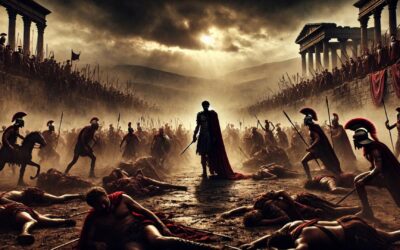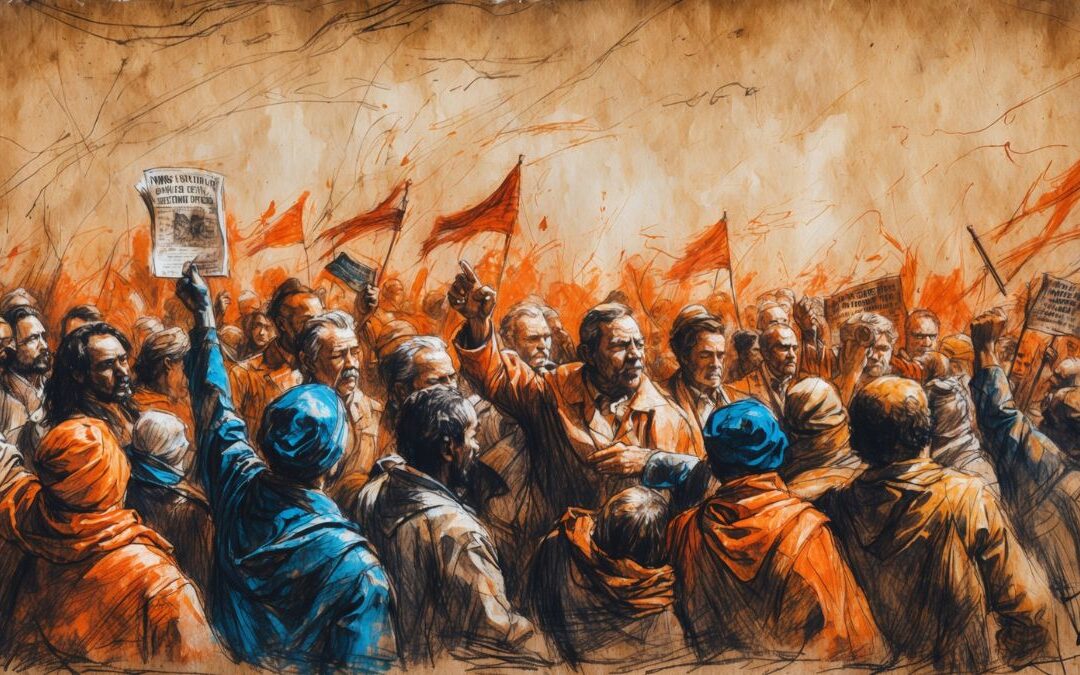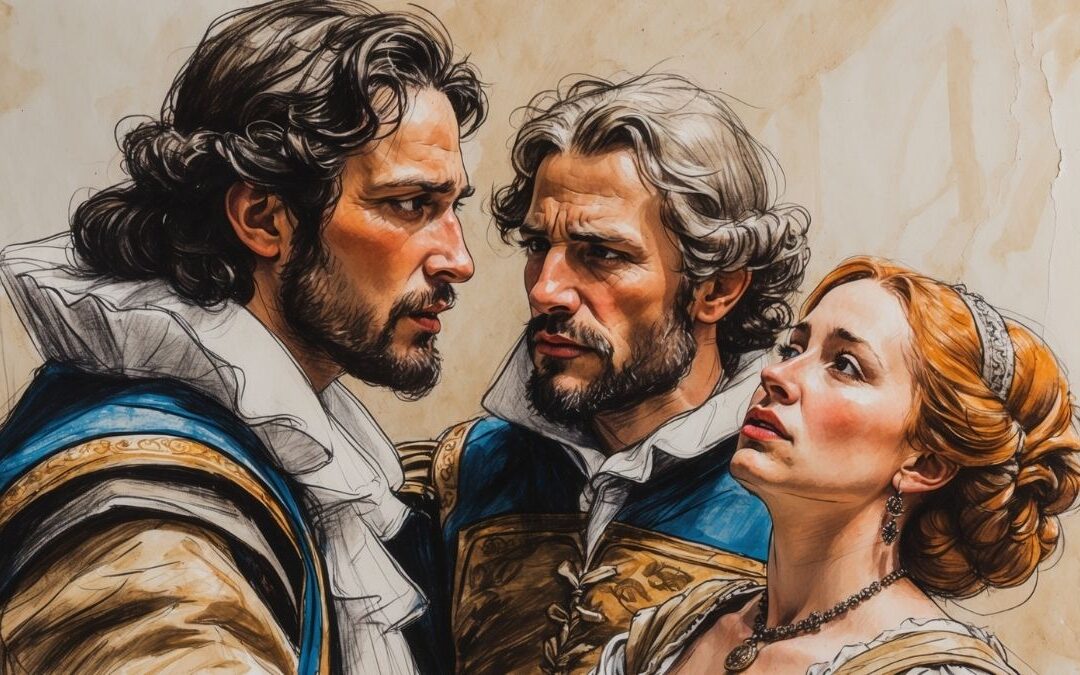- Keywords and Definitions
- Key Takeaways
- Frequently Asked Questions (FAQs)
- Were there any other instances of fraternization like the Christmas Truce during WWI?
- Did the military leadership support the Christmas Truce?
- How did the soldiers initiate the truce?
- Was there a similar truce during Christmas in subsequent years of the war?
- How did the public react to news of the Christmas Truce?
- Did the truce have any long-term effects on the war?
- Were there any official records or documentation of the Christmas Truce?
- Did the truce occur along the entire Western Front?
- How did the Christmas Truce influence post-war relations between Germany and Britain?
- What lessons can contemporary society learn from the Christmas Truce?
- Myth Buster
- Myth: The Christmas Truce was planned by military leaders.
- Myth: The truce indicated a general desire for peace on both sides.
- Myth: The truce lasted for an extended period.
- Myth: The truce was universally observed along the Western Front.
- Myth: Soldiers involved in the truce were punished.
- Myth: The truce led to a significant decrease in fighting afterward.
- Myth: The truce was a sign of widespread pacifism among soldiers.
- Myth: All soldiers happily participated in the truce.
- Myth: The truce was widely celebrated and encouraged in Britain and Germany.
- Myth: The Christmas Truce is well represented in official military histories.
In the annals of history, where tales of conflict and war abound, there exist moments of unexpected humanity that shine like beacons of hope, illuminating the potential for peace in a world often divided by strife. Among these rare and poignant events, the Christmas Truce of 1914 stands out as a remarkable instance of camaraderie and peace that spontaneously emerged amidst the grim realities of World War I.
The story of this extraordinary ceasefire along the Western Front, where German and British soldiers laid down their arms to celebrate Christmas, is not just a tale from the past; it is a powerful reminder of the enduring human spirit and its capacity for empathy, even in the most unlikely circumstances. As we delve into this narrative, we embark on a journey back in time to the trenches of World War I, where a glimmer of hope and unity flickered briefly yet brightly in the darkness of war.
The year was 1914, and the world was in the throes of one of the most devastating conflicts in history. The Western Front, a stretch of battlefield that meandered through Belgium and France, was a scene of relentless fighting, where soldiers on both sides endured harsh conditions, constant danger, and the ever-present shadow of death. Amidst this bleak landscape, as Christmas approached, something extraordinary began to unfold.
It started with small acts of goodwill – soldiers from opposing sides shouting greetings across the trenches, exchanging cigarettes and food, and even singing carols together. These initial gestures of fraternity soon culminated in a series of unofficial ceasefires along various points of the front. For a brief period, the guns fell silent, and the battlefield transformed into a space of peaceful interaction.
German and British soldiers emerged from their trenches, meeting in the scarred no-man’s land that had, until then, been a place of death and destruction. They shared stories, showed photos of loved ones, and even played impromptu games of football. The sight of enemies coming together to celebrate the season of goodwill was both surreal and deeply moving.
This unexpected truce was not a product of high-level negotiations or diplomatic efforts; it was a grassroots movement born from the common soldiers’ desire for respite and human connection. It was a moment where the shared humanity of the soldiers overcame the dehumanizing effects of war, if only temporarily.
As we reflect on this remarkable event, it becomes clear that the Christmas Truce of 1914 was more than just a temporary cessation of hostilities. It was a powerful demonstration of the human capacity for empathy, understanding, and peace. It showed that even in the midst of conflict, there is always the potential for common ground, for recognizing the humanity in the ‘other,’ and for choosing peace over aggression.
The legacy of the Christmas Truce lives on as a symbol of hope and a reminder that peace is always possible, even against the most daunting odds. It teaches us that in the darkest of times, there can be moments of light, where the better angels of our nature prevail. This story is not just a historical anecdote; it is a call to remember our shared humanity and to continually strive for a world where peace is not just a fleeting truce, but a lasting reality.
As we continue to navigate the complexities of the modern world, with its own set of conflicts and challenges, the Christmas Truce of 1914 serves as an enduring inspiration. It reminds us that amidst division and hostility, there remains a universal longing for peace, understanding, and the simple joys of human connection. It encourages us to look beyond our differences, to find common ground, and to work together towards a future where the spirit of the Christmas Truce is not an exception, but a guiding principle for all human interactions.
In closing, the Christmas Truce of 1914 stands as a testament to the resilience of the human spirit and the power of hope. It is a story that transcends time, serving as a poignant reminder of what is possible when we choose peace, compassion, and understanding over conflict and division. As we look back on this remarkable moment in history, let us carry forward its message of hope and its vision of a world united in the pursuit of peace and harmony.
Keywords and Definitions
- Christmas Truce 1914: The spontaneous ceasefire along the Western Front during World War I where German and British soldiers celebrated Christmas together.
- World War I Ceasefire: A temporary stop in fighting, particularly referencing the 1914 Christmas Truce.
- German and British Soldiers: The military personnel from Germany and Britain who were involved in World War I and participated in the Christmas Truce.
- Western Front: The main theatre of war during World War I, stretching across Belgium and France.
- Spontaneous Peace: A sudden and unplanned instance of peace, particularly in a conflict situation.
- Wartime Humanity: The human aspects and ethical behaviors displayed by individuals during war.
- Historical Ceasefire: A cessation of hostilities from a historical perspective, particularly significant in its context and implications.
- World War I Christmas: The celebration of Christmas during World War I, especially noted for events like the Christmas Truce.
- Soldiers’ Fraternity: The bond and camaraderie shared among soldiers, often transcending national and ideological divides.
- Cross-enemy Compassion: The empathy and understanding shown between enemies, particularly in a wartime context.
Key Takeaways
- The Christmas Truce of 1914 was a unique event where enemies spontaneously declared peace to celebrate Christmas.
- This truce was not organized by high command but was a grassroots initiative by the soldiers themselves.
- The truce is a powerful example of shared humanity overcoming the horrors of war.
- It involved exchanging gifts, singing carols, and playing football between German and British soldiers.
- The event symbolizes hope and the possibility of peace even in the direst circumstances.
- It serves as a reminder of the importance of empathy, understanding, and compassion in conflict situations.
- The truce is a historic example of the human capacity for peace and fraternity in the midst of war.
- The legacy of the Christmas Truce encourages ongoing efforts towards peace and understanding in the modern world.
Frequently Asked Questions (FAQs)
Were there any other instances of fraternization like the Christmas Truce during WWI?
Yes, there were other smaller instances of fraternization during WWI, though none as famous or widespread as the Christmas Truce. These moments often occurred during quieter periods of the war, where soldiers would exchange small tokens or shout greetings across the trenches.
Did the military leadership support the Christmas Truce?
The Christmas Truce was not officially sanctioned by military leadership on either side. In fact, many commanders disapproved of it, fearing that it would undermine fighting spirit and discipline among the troops.
How did the soldiers initiate the truce?
The truce began with soldiers singing carols and shouting greetings to each other from their trenches. This gradually evolved into climbing out of the trenches and meeting in no-man’s land.
Was there a similar truce during Christmas in subsequent years of the war?
Attempts were made in later years of the war for Christmas truces, but they were less successful due to stricter enforcement by officers and the increasing bitterness and scale of the conflict.
How did the public react to news of the Christmas Truce?
Public reaction was mixed; some saw it as a beautiful expression of humanity and hope, while others viewed it as an act of fraternization with the enemy.
Did the truce have any long-term effects on the war?
The truce did not have a significant long-term impact on the war itself. However, it left a lasting legacy as a symbol of peace and the potential for empathy even in times of conflict.
Were there any official records or documentation of the Christmas Truce?
The Christmas Truce was documented through letters, diaries, and photographs of the soldiers involved, as well as some newspaper articles at the time.
Did the truce occur along the entire Western Front?
The truce occurred at several, but not all, points along the Western Front. The extent of the truce varied depending on the attitudes of the troops and commanders in different sectors.
How did the Christmas Truce influence post-war relations between Germany and Britain?
While the Christmas Truce did not directly influence diplomatic relations, it remains a poignant symbol of reconciliation and shared humanity, often referenced in discussions of Anglo-German relations.
What lessons can contemporary society learn from the Christmas Truce?
The Christmas Truce teaches the value of empathy, the power of grassroots movements for peace, and the importance of seeing shared humanity even in adversaries. It’s a reminder of the potential for peace and understanding in conflict situations.
Myth Buster
Myth: The Christmas Truce was planned by military leaders.
Reality: The truce was a spontaneous act initiated by the soldiers themselves, without official sanction.
Myth: The truce indicated a general desire for peace on both sides.
Reality: While it showed a momentary desire for peace among frontline soldiers, it did not reflect broader strategic or political objectives.
Myth: The truce lasted for an extended period.
Reality: The truce was relatively brief, generally lasting only on Christmas Eve and Christmas Day.
Myth: The truce was universally observed along the Western Front.
Reality: The truce occurred in patches along the front and was not a universal phenomenon.
Myth: Soldiers involved in the truce were punished.
Reality: While high command disapproved, there are few records of any severe punishment for those who participated.
Myth: The truce led to a significant decrease in fighting afterward.
Reality: The fighting resumed to its previous intensity after the truce.
Myth: The truce was a sign of widespread pacifism among soldiers.
Reality: The truce was more an act of weary soldiers seeking respite rather than an ideological stance on war.
Myth: All soldiers happily participated in the truce.
Reality: Participation varied, and some soldiers chose not to partake, remaining cautious or hostile.
Myth: The truce was widely celebrated and encouraged in Britain and Germany.
Reality: The reactions were mixed, with some segments of society and military leadership viewing it as inappropriate fraternization.
Myth: The Christmas Truce is well represented in official military histories.
Reality: The truce, while acknowledged, often occupies a minor place in official military histories compared to strategic and tactical aspects of the war.











0 Comments